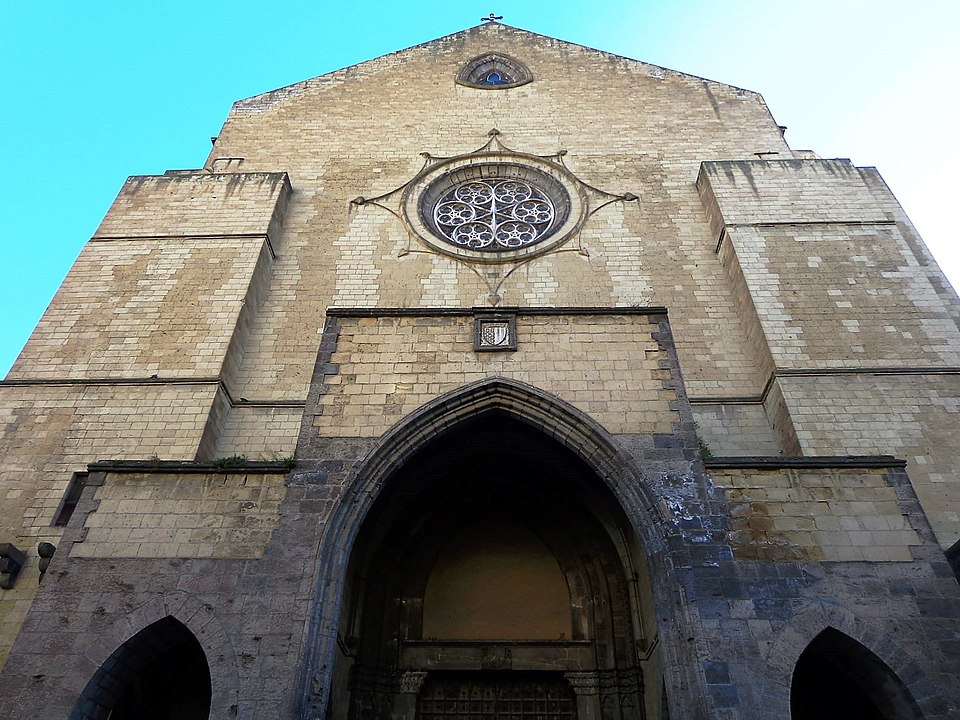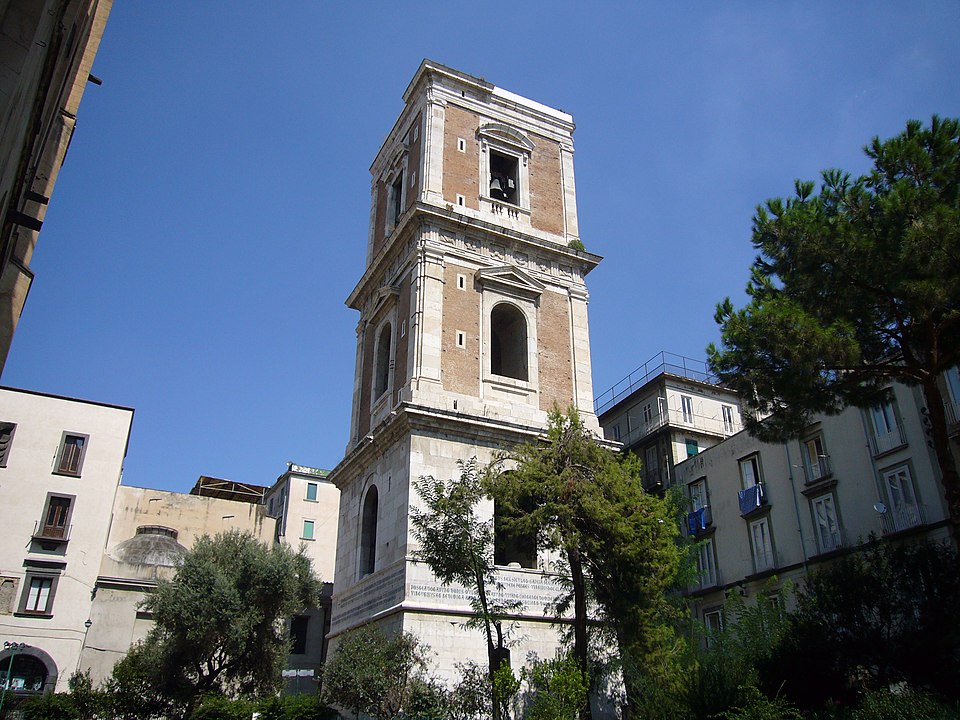The Monastery of Santa Chiara, is an important house of cult located in Naples. It is one of the largest monastic complexes in the city, an important place of historical and artistic interest in Naples, offering insight into Gothic-Angevin culture and art in the city.
It is an evocative place to visit for those interested in history, art, and architecture.

Contenuti / Contents
The Basilica of Santa Chiara
The churc is considered the largest Gothic-Angevin structure in Naples. It is surrounded by a monastery that includes four monumental cloisters, archaeological sites in the surrounding area, and several other rooms that house the Museo dell’Opera di Santa Chiara.
Inside the church, visitors can also see the nuns’ choir, with frescoes by Giotto, a large refectory, sacristy and other basilica areas.
The basilica of Santa Chiara was commissioned by Robert of Anjou and his wife Sancia of Majorca. The architect Gagliardo Primario began work in 1310 and completed it in 1328, finally opening for worship in 1330. The church was built in the Provençal Gothic style and became one of the most important in Naples. Several artists of the time, such as Tino di Camaino and Giotto, worked on the interior, Giotto painting frescoes in the nuns’ choir depicting Episodes from the Apocalypse and Stories from the Old Testament.
A cloistered place for the Friars Minor was built next to the basilica, which later became the church of the Clarisse.
In 1571, in the basilica of Santa Chiara, the papal banner of Pope Pius V and the staff of command of the Christian coalition were presented to Don John of Austria before the departure of the fleet for the battle of Lepanto against the Ottoman Turks.
Between 1742 and 1796 the church was extensively renovated in Baroque style by Domenico Antonio Vaccaro and Gaetano Buonocore. The interior was embellished with works by Francesco de Mura, Sebastiano Conca, and Giuseppe Bonito. Ferdinando Fuga executed the marble floor in 1762.
During World War II, the basilica was damaged by bombing and many of the frescoes were lost. Restoration work was completed in 1953, returning the basilica to its original 14th-century appearance.

The facade
The facade features a large Gothic portal from the 14th century. During post-war reconstruction, the rose window in the center of the facade was partially restored.

The bell tower
To the left of the church is the 14th-century bell tower, which was built at intervals and suffered several interruptions. After an earthquake in 1456, the bell tower collapsed almost completely and was later rebuilt in the Baroque style. It has a square plan and is built on three levels separated by marble cornices. The lower orders are made of stone blocks, while the upper orders are made of brick with marble pilasters. Between the second and third levels is an entablature decorated with triglyphs and metopes with Franciscan liturgical symbols.
On the facades of the bell tower are four inscriptions in Gothic letters that tell about the history of the foundation of the basilica from 1310 to 1340.
The interior of the tower features a spiral staircase leading to the roof.

The Monastery
The Monastery of Santa Chiara, located behind the basilica, is one of the largest in Naples. It consists of four cloisters: that of the Clarisse, St. Francis, Friars Minor, and Service. The cloister of the Clarisse is decorated with 18th-century majolica and 17th-century frescoes. The cloister of St. Francis was damaged during the war but was restored later. The monastery library contains about 50,000 volumes.
The monastery also houses the Opera Museum, which displays sculptural works that survived after the bombing.
The Monastery of Santa Chiara is a very atmospheric place rich in history. It houses the Museo dell’Opera di Santa Chiara, which offers an extensive collection of artworks and archaeological finds from the Roman period. In addition, there are four monumental cloisters inside the monastery, each with its own special feature.

The Majolica Cloister
The Cloister of the Clarisse, also known as the Majolica Cloister, is the most important and characteristic of the basilica. It is accessible from the courtyard on the left side of the basilica and is designed by Domenico Antonio Vaccaro. It is adorned with 17th-century frescoes depicting saints, allegories and scenes from the Old Testament. This cloister is one of the few Baroque remains that survived the war.
Other rooms in the monastery can also be accessed from the cloister of the Clarisse, including the cloister of St. Francis, which is smaller but of great historical importance. Unfortunately, it has undergone many structural changes over time and during World War II was severely damaged by Allied bombing.
The library is located on the north side and is a collection of about 50,000 volumes, with a section devoted to Franciscan history and culture.
The monastery houses an 18th-century nativity scene and the Maria Cristina Hall, dedicated to Queen Maria Cristina of Savoy. This hall has some remains of Giottesque frescoes depicting the Crucifixion and also houses an exhibition dedicated to the queen’s relics.
The Monastery of Santa Chiara is a fascinating place and well worth a visit to immerse yourself in its art, history and spirituality.






